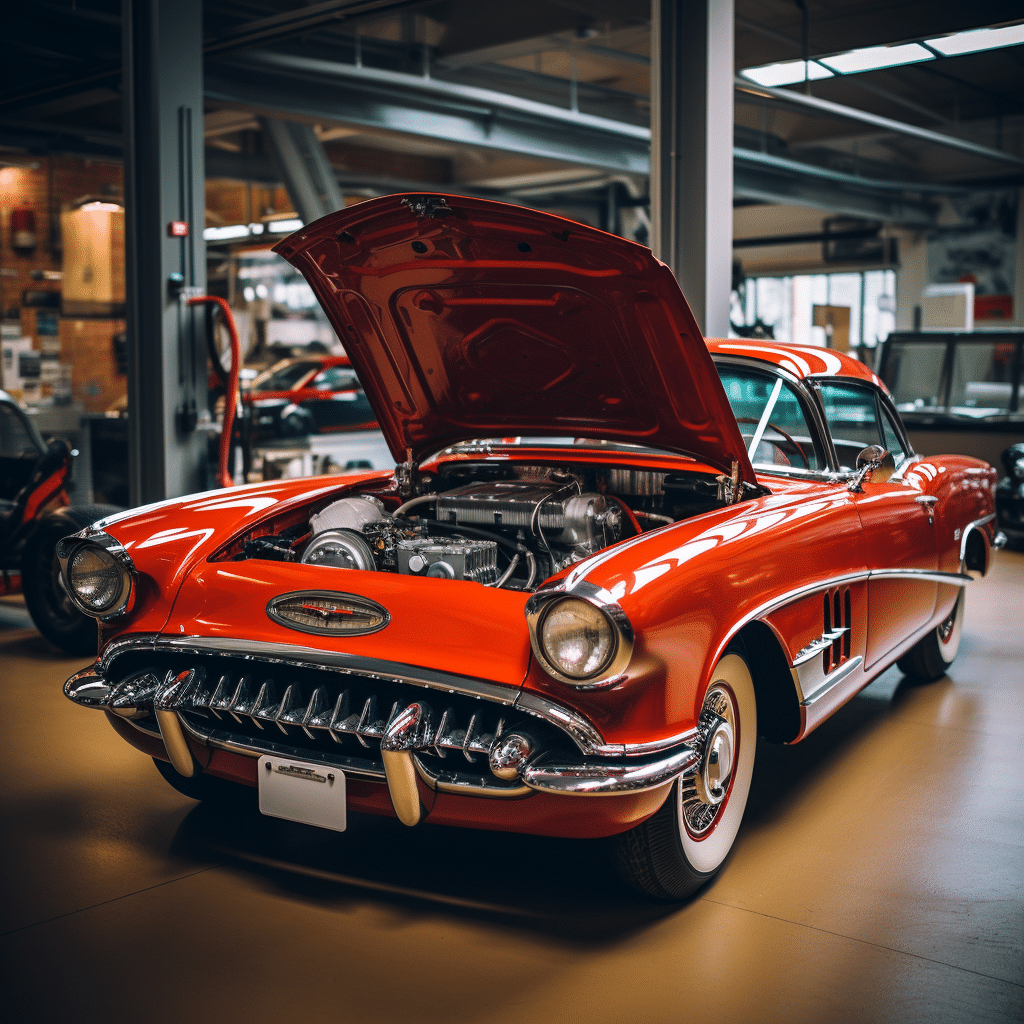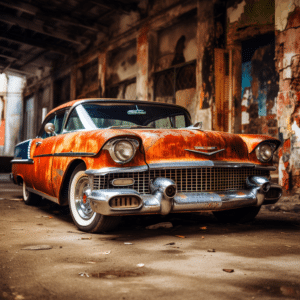
Mastering Car Restoration Marketing: Strategies for Success
Car Restoration Marketing, Restoring a car? Artistic! It takes passion, patience, and perseverance. Breathing new life into a vintage vehicle, bringing back its glory and its essence. But, once done, how to market it? This article explores strategies to show off the beauty and value of a restored car.
Photography plays a huge role in marketing. High-quality images that show every angle and detail of the car can make a big difference. Professional photos highlighting craftsmanship and unique features draw attention.
Creating a narrative around the car is just as important. Share its history, owners, anecdotes. This storytelling can invoke an emotional connection with potential buyers.
Digital platforms like social media and online classifieds offer lots of chances to showcase the restored car. Engaging with relevant communities and forums also generates buzz.
John Peterson restored his father’s vintage Mustang. He put in lots of detail and captured childhood memories of riding with his dad. Car Restoration Marketing went viral on social media and attracted potential buyers.
Marketing a restored car requires emotions, stories, and capturing the vehicle’s history. With visuals, narratives, and digital strategies, you can reach passionate collectors who will appreciate your masterpiece.
Research and Planning

Research and planning are absolutely necessary for successful car restoration marketing. Doing thorough research, analyzing the target market, and making a plan ensures maximum visibility and reach. A well-thought-out strategy will help attract customers and fans, boosting the chance of a successful sale.
Let’s talk about some important things to consider:
- Type of Car: Figure out the make, model, and year of the restored car. Knowing this helps you understand its historical value and potential market value.
- Market Analysis: Observe trends and demand in the classic car market. Compare prices of similar cars to set a competitive price range.
- Target Audience: Decide who is likely to buy your restored car. Consider factors like age, gender, location, and hobbies.
- Advertising Channels: Pick the best platforms to show your car. Social media groups and vintage car websites can multiply exposure.
- Visual Presentation: Professional photography that shows interior and exterior details, with accurate color, is crucial.
- Engaging Descriptions: Write descriptions that emphasize unique features and create an emotional connection.
Don’t forget to continuously adjust your strategy based on customer feedback. By responding to customers and using the best marketing channels, you increase the likelihood of finding the perfect buyer.
Car Restoration Marketing is the time to act! Don’t miss out on a wider audience by skipping research and planning. Start a good marketing strategy and show off your hard work and skill!
Setting a Budget
Setting a budget for marketing a restored car requires careful planning. It’s key to use funds wisely to get the most from your marketing efforts.
Start by deciding your overall goals. Think about what you want to achieve with your car – like more brand awareness, finding buyers, or generating leads. Once you know your aims, you can set an appropriate budget.
Next, research marketing channels and strategies linked to the automotive industry. Options could be online ads, social media campaigns, print ads, or car shows and events. See how much each costs and focus on those that will reach your target audience.
Remember, budgeting is more than deciding how much you’ll spend. You also need to track and manage expenses while marketing. Check how each campaign is doing and adjust your budget. This way, you get the best results with your spending.
To understand why setting a budget is important, look at John. He recently restored a muscle car, but didn’t put money aside for marketing. Once he did, he planned his approach and put money into online ads and car shows. And he got lots of potential buyers!
By setting a budget, you can make sure you use resources properly. This will give you visibility and success when selling your car.
Restoring the Car
Restoring a car demands skillfulness and carefulness. Here are five steps to restore a car:
- Check the car’s condition: Before beginning the restoration, examine the car to detect what needs to be remedied. This will help you plan the restoration better.
- Make a restoration plan: Create a plan with specific goals and tasks for each stage of the restoration. This will assist you in staying structured and concentrated.
- Repair or replace broken parts: Repair or change any damaged or worn-out parts of the car. Use excellent materials and keep the car’s authenticity as much as possible.
- Refresh and refinish: Give your restored car a new appearance with refurbishing and refinishing components like the body, interior, and engine. This will improve both its look and performance.
- Test and tweak: After finishing the repairs and refinements, test your restored car to make sure it works correctly. Tweak any parts that require adjusting for optimal performance.
Throughout the restoration process, note that attention to detail is essential. Take your time and be patient with each step to get exceptional results.
Pro Tip: Capture each stage of your car restoration journey through photos or videos. Posting these visuals on social media or relevant online forums can generate interest in your project and help promote your restored car efficiently.
Marketing Strategies
To boost the marketability of a restored car, implement these key strategies:
- Construct an online presence with a professional website and social media. Show off its features and restoration process.
- Optimize search engine rankings using relevant keywords in content, meta tags, and URLs.
- Attend car shows and exhibitions to reach buyers and network with enthusiasts.
- Collaborate with classic car influencers and bloggers to enlarge your audience.
- Offer personal experiences such as test drives or exclusive events to spark genuine interest.
Car Restoration Marketing addition, emphasize the detail in the restoration process. Add high-quality photos and videos to your website and social media for an immersive visual experience. Utilize these strategies to effectively market your car and make it visible.
Implement these ideas:
- Create a marketing plan tailored to your target audience for maximum exposure.
- Use storytelling when presenting the car’s history, emphasizing its uniqueness and value.
- Partner with local automotive businesses to gain more attention.
- Provide financing options or collaborate with financial institutions for flexible payment plans.
- Hold workshops or seminars to teach about classic cars, while exhibiting your restored masterpiece.
By following these tips, you’ll not only attract buyers, but also build credibility in the classic car community. Car Restoration Marketing important to remember that effective marketing is essential to showcase the car’s true potential.
Advertising and Promotion
To advertise and promote a restored car successfully, a strategic marketing plan is key. This includes using different channels, targeting the right people, and showing off the car’s unique selling points. Here’s a breakdown of different strategies for restoring cars:
| Channel | Description |
|---|---|
| Online | Use social media platforms and online classifieds to reach more people. Create interesting listings with good photos, descriptions, and restoration history. Connect with potential buyers through online forums and communities. |
| Advertise in classic car enthusiast magazines and newspapers. Include amazing visuals and an enticing description of the craftsmanship and restoration. | |
| Events | Attend classic car shows, auctions, and exhibitions to show the car to people who appreciate vintage automobiles. Give demos and test drives to get people excited about the car and form personal connections with potential buyers. |
| Partnerships | Collaborate with local businesses like car dealerships, repair shops, or vintage clothing stores to promote each other’s offerings. This can help get more exposure by tapping into existing customers with similar interests. |
Plus, here are extra tips to market a restored car:
- Target Niche Communities: Reach out to online communities or forums dedicated to restoring cars or vintage automobile enthusiasts. This helps you get to your target audience.
- Professional Photography: Get professional photography services to take great photos of your car from all angles. These beautiful pictures can help draw in buyers.
- Highlight Unique Features: Showcase any unique features or modifications made during the restoration process that make your car stand out from the rest.
- Storytelling: Tell the story behind the restoration project – including any difficulties or fascinating stories – to create an emotional bond with potential buyers.
By using these promotion strategies and suggestions, you can effectively market a restored car and increase its chances of finding the perfect buyer.
Building and Maintaining Relationships

Building relationships with car buyers is key for successful marketing. It helps create trust, grow the customer base, and bring back repeat business.
- 1. Talking to potential buyers and understanding their needs is vital. Listening to them and giving personalised solutions sets a strong base for long-term connections.
- 2. Maintaining these links needs regular follow-ups and providing great customer service. By addressing issues fast and doing more than expected, customer loyalty is earned.
- Connecting with industry leaders and attending motor vehicle events increases partnerships that can push the restored car to a bigger audience.
To make these relationships even stronger, sharing success stories of happy customers can encourage others to rely on the restoration quality.
A Pro Tip: Stay in touch with customers on social media by posting new arrivals or restoration process videos. This makes sure customers are informed and enthusiastic about your products.
Conclusion
In the car restoration world, marketing is key for highlighting the beauty and uniqueness of the restored vehicle. To do this, use high-quality photos to show the sleek lines and intricate details. Also, include before-and-after pics to show the hard work and dedication that went into the restoration.
Describe the car’s history, features, and special modifications in an engaging way. It should capture attention and convey the value of the car.
Online platforms like social media and classified ads websites can expand your reach. Interact with car enthusiasts from around the world. Respond quickly and share updates on the project.
For extra exposure, collaborate with influencers and experts in the automotive industry. Their support adds credibility and could attract more buyers or collectors.
Be strategic and creative with your marketing tactics. Showcase the beauty and craftsmanship of the car to those who appreciate it. Leverage online platforms and consider seeking help from influential figures.
Frequently Asked Questions
Q: How can I market a restored car?
A: To market a restored car, start by documenting the restoration process with before and after photos. Create a compelling listing or advertisement highlighting the unique features and improvements made to the car. Utilize online platforms such as car enthusiast forums, social media, and classified websites to reach potential buyers. Consider attending car shows or contacting local car clubs to showcase your restored car.
Q: What information should I include in the listing?
A: Include detailed information about the car’s make, model, year, and any distinct characteristics. Mention the specific restoration work that has been done, such as engine rebuilds, bodywork, or any upgrades. Provide details about the car’s condition, mileage, and any relevant documentation, such as restoration receipts or certifications.
Q: How do I determine the price for a restored car?
A: Pricing a restored car depends on factors like the make and model, rarity, condition, and the amount of restoration work done. Research similar restored car listings to get an idea of market prices. Consider consulting with experts or appraisers specializing in classic cars to determine a fair price based on its quality and demand.
Q: How can I reach potential buyers for my restored car?
A: Utilize various marketing channels to reach potential buyers. Create social media accounts dedicated to showcasing your restored car and join relevant car enthusiast groups. Use online classifieds websites, auction platforms, and car forums to list your car. Additionally, consider hiring a digital marketing agency that specializes in automotive marketing to target potential buyers effectively.
Q: What are some effective marketing strategies for selling a restored car?
A: In addition to online marketing efforts, attend local car shows, auctions, and events related to classic cars to expose your restored car to a targeted audience. Develop professional marketing materials such as brochures or flyers with high-quality photos and detailed information to distribute at these events. Consider partnering with reputable automotive restoration shops or museums to enhance your car’s visibility and credibility.
Q: How can I present my restored car in the best way possible?
A: Presenting your restored car effectively is crucial for marketing success. Ensure the car is thoroughly cleaned and polished before taking high-quality photos from various angles. Highlight the distinctive features and craftsmanship of the restoration work. Consider creating a professional video tour to showcase the car’s interior, exterior, and engine. Write a compelling and detailed description that emphasizes the car’s unique qualities and the effort put into its restoration.
